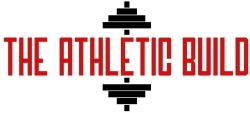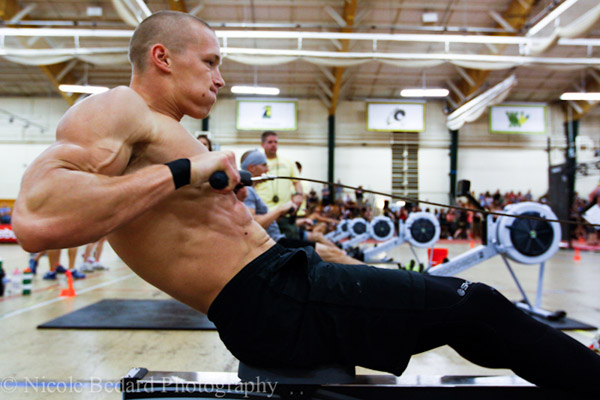Cardio doesn’t have to mean mindless jogging while staring at a wall. If you’re doing it right, it’s a weapon, one that can shred fat, build lung power, and keep you moving long after everyone else is gassed out.
There are four main ways to get it done: metabolic conditioning, moderate-intensity cardio, slow long-distance work, and interval training. Each one has its own perks, its own drawbacks, and a right time to use it. Get them dialed in and you’ll be faster, leaner, and harder to kill.
Metabolic Conditioning
Metabolic conditioning , or Met-Con if you want to sound like you’ve been around a gym or two, is where you put your whole body to work and don’t give it much of a chance to breathe. It’s not about one muscle group. It’s not about a comfy pace. This is big, compound movement after big, compound movement, with just enough rest to keep you from falling over.
The goal is simple: make your body better at using and delivering energy. That means tapping into multiple muscle groups at once and pushing them until both your lungs and your legs are screaming. You’re waking up every system you’ve got, forcing them to adapt so you can go harder, recover faster, and burn through fat like it owes you money.
Met-Con can be a mix of almost anything: kettlebells, barbells, bodyweight, plyometrics, battling ropes. You can mix and match as long as the pace is high and the rest is low. Done right, it builds strength, spikes conditioning, and turns you into the kind of athlete who’s hard to gas out.
Most people tend to think that ‘conditioning’ mostly refers to aerobics when they want to improve blood transport, condition the heart and improve endurance, but this is just part of the larger picture. Met-con is much bigger than that because it encompasses not just aerobics but other forms of movement as well.
For instance, sprinting and weight training are considered anaerobic exercises that can be more effective than cardio staples such as long-distance running or walking. Met-con is huge in the fat burning and weight loss department, as well as improving one’s cardio output but don’t forget the benefits of slow long-distance and interval training can bring.
Now, you may be wondering why met-con is a better option than slow long-distance exercise. There are actually four points I’d like to share with you:
- Met-con can make use of multi-planar, unilateral or corrective exercises to put greater metabolic demand as needed. Plus, it can correct functional movement patterns and asymmetries as well.
- A typical workout may consist of core, conditioning and power exercises.
- Met-con offers much more variety in terms of movement so you can ‘pick’ out what you like and enjoy the activity. It engages both body and mind and is fun once you’re used to it.
- Pound for pound, met-con works better in line with my client’s goals, e.g., core strength, weight loss, improved fitness levels and so on as compared to interval training.
A typical metabolic conditioning session may consist of the Kettlebell Complex, a CrossFit Triplet and an Extended Met-Con Circuit. Here’s how you can do them for the best results.
Kettlebell Complex
Do the following movement on each arm for five reps each. Remember, you are not allowed to rest or put the weights down!
- One-arm Kettlebell Swing
- One-arm Kettlebell Push Press
- One-arm Kettlebell Clean
- One arm Bent Over Kettlebell Row
- One-arm Kettlebell Snatch
Here’s a video to help you with the form and movement:
The CrossFit Triplet
The CrossFit Triplet is where metabolic conditioning meets pure grit. It’s simple on paper, but once you start, you’ll figure out real quick that “simple” doesn’t mean easy.
Here’s how it works. You pick three movements: one bodyweight, one with weight, and one that tests your conditioning. Then you run through them back-to-back with barely enough rest to breathe. The magic number is 21 reps each for the first round, 15 for the second, and 9 for the last. Sounds short. It isn’t.
A killer combo? Try burpees, barbell thrusters, and the Concept 2 rower. The burpees light your lungs on fire, thrusters hammer your whole body, and the rower just empties whatever’s left in the tank. By the time you’re done, you’ll know exactly why this workout has a reputation for breaking people… and why the ones who finish it keep coming back for more.
Extended Met-Con Circuit
When you’re looking for a workout that tests every part of you, not just the muscles but the mind, an extended circuit of metabolic conditioning is where you go. This is the kind of training that doesn’t let you hide. It demands work, focus, and the ability to keep moving when everything in you says to slow down.
The idea is simple, but man, it hits hard. You pick up a moderate weight, something you can push for 10 to 15 reps without completely folding. You hit big muscle groups, high-rep movements, the ones that leave your lungs burning and your legs begging for mercy.
Do that, and your body starts pumping out lactic acid like crazy. That’s not just burn for the sake of burn; that spike in lactic acid signals your body to crank up growth hormone production. More growth hormone means faster recovery, more muscle, better conditioning.
CrossFitters have a name for this kind of grind. They call it a “chipper” because you chip away at it until it’s done, one rep, one set, one gasp for air at a time. Stick with it and your VO2 max shoots through the roof. It’s like beating your own cardio system at its own game, and winning.
So, here’s what you need to do- complete as many reps for each exercise shown below:
- Pull-ups (ten reps)
- Goblet Hold Lunges (thirty reps)
- Push-ups (thirty reps)
- Concept 2 rower (set at thirty calories)
- Push press (thirty reps)
- Sumo High Pull Deadlift (thirty reps)
- Wall Ball shots (thirty reps)
The challenge is that you must complete them within 20 minutes. Do them with as minimal rest as possible.
Related: Shape Up and Burn Fat With Metabolic Training
Moderate Intensity Cardio
Moderate-intensity cardio doesn’t get the hype that HIIT does, but if you’re serious about building an aerobic base, this is your bread and butter. There’s actual science behind it. Your heart’s left ventricle is the workhorse that pumps blood to the rest of your body. Make it stronger and you’ll move more blood, carry more oxygen, and suddenly you can go longer without feeling like you’re about to die halfway through a workout.
The problem? HIIT isn’t great for this. Your heart rate skyrockets so fast that it doesn’t have time to fully fill and pump, which is kind of the whole point. Moderate-intensity work hits the sweet spot. You’re pushing hard enough to make the heart work, but not so hard that you burn out in five minutes.
How do you know if you’re in that zone? Easy. You can still hold a conversation without gasping between every word. You’re sweating, but it’s steady, not a full-on downpour. And your heart rate is up in that “yeah, I’m working” range without feeling like it’s trying to punch its way out of your chest.
If you’re hitting those marks, you’ve got options. Swim, run, bike, climb stairs, pick your poison. Just keep it consistent, and over time you’ll notice you can do more, recover faster, and go toe-to-toe with workouts that used to wreck you.
One of the sneaky benefits of moderate-intensity cardio is how fast it helps you bounce back. Your recovery between tough training sessions, hard sets, and even inside the workout itself gets sharper. That means more gas in the tank when it counts.
If building a solid aerobic base is the goal, it’s smart to press pause on metabolic conditioning and HIIT for now. I know that sounds like you’re going soft, but it’s not. This is about playing the long game. Put in a few weeks of steady, moderate work and you’ll notice your engine feels bigger. You’ll last longer before fatigue sets in, and your body won’t crash as hard after pushing it.
You’ve got options here. Airdyne bikes and Concept 2 rowers are perfect if you can get your hands on them, but running and swimming work just fine too. Pick a couple of workouts each week, stick to them, and keep an eye on your numbers. The goal is simple, improve, even if it’s just a little, every time you do them.
Airdyne Bike
- Go for three miles, then rest a minute
- Go for two miles, then rest a minute
- Go for a mile and you’re done
Concept 2 Rower
- Beginner? do 3K, or three thousand meters
- For Intermediate users, do 4K, or four thousand meters
- Advanced users should set their sights on 5K, or five thousand meters
Airdyne Again
- Beginners should aim for 3 miles
- Intermediate users should do 4 miles
- Advanced users should go for 5 miles
The Row Split
- Row for 2K, or two thousand meters then rest for a minute
- Row for a thousand meters then rest one minute
- Row five hundred meters then rest for a minute
- Row two hundred and fifty meters, then rest one minute
Airdyne Max Distance
- Go as far as you can for twenty minutes and try to beat your numbers.
For each selection
, you should always try to improve your splits or time.
Related: How to Increase Your Running Speed
Slow, Long Distance Cardio

Slow long-distance cardio is what I like to call the “active play” zone. It’s not about chasing a stopwatch or setting PRs. It’s about getting up, moving, and letting your body cruise without beating it into the ground. Long walks, easy bike rides, wandering through a park, all of it counts. And yeah, it feels good.
If your weekends are turning into couch marathons and Netflix sprints, swap one for the other kind of marathon. Get outside. Move. It’s not going to light your lungs on fire, but it will keep you in the game between harder sessions and give your body a chance to recover without sitting still.
Now, I’m not going to lie to you, slow cardio won’t melt fat as fast as other training. Met-con, intervals, moderate-intensity work… they all edge it out for calorie burn and conditioning. But if you’ve been away from training, or you’re carrying a little extra weight, this is one of the smartest places to start. It builds the habit. It gets your joints used to moving again. It’s the on-ramp back to real work.
Just don’t get stuck here. This is the warm-up lap, not the main event. Once your body feels ready, it’s time to layer in the stuff that pushes you harder. That’s when the real conditioning gains and the fat loss kick in.
Related: How to Run Your Fastest 5k EVER
Interval Training
Interval training is where you mix work and rest into one brutal little package. Go hard, pull back, go hard again. Simple, but nasty when you do it right.
You can make it happen almost anywhere. Stepmill, rower, treadmill, sprints on a track, or grinding away on an Airdyne bike, it all works. The tool isn’t the magic, the effort is.
At its core, it’s just bursts of high output followed by short recovery windows. Maybe you’re sprinting for thirty seconds, then catching your breath for a minute before hitting it again. The length of the break depends on your fitness and how much you want to suffer.
The beauty here is flexibility. You can tailor it to your goal, whether that’s fat loss, speed, or building a gas tank that doesn’t quit. It’s fast, it’s efficient, and it leaves no doubt that you trained.
Why Should You Take Up Interval Training?
Interval training is the go-to discipline of fitness buffs and athletes when they want to get in the best possible shape. It’s even assumed a new moniker- the HIIT, or high-intensity interval training.
You enjoy an increase in metabolic rate in twelve to twenty four hours after a good workout session. Interval training is not only great for conditioning the body, but also for losing weight and torching unwanted fat.
In today’s fast-paced society, not everyone will have time to complete training sessions that take 40 to 60 minutes. The answer? According to science, less is more when you want to get slimmer.
One of the best ways to increase workout intensity is to switch to interval training. Instead of being on ‘beast mode’ 100% of the time, you alternate between low or medium intensity and high intensity. Science has proved that interval training is better than anaerobic and aerobic fitness for fat-burning purposes.
Why Not Do High-Intensity Interval Training All The Time?
HIIT gets talked about like it’s the magic key to a perfect body. Truth is, it’s not. It’s brutal, it’s complicated, and if you don’t really know what you’re doing, you’ll end up flailing around, wasting time, and wondering why you’re not seeing results.
It takes a lot out of you, too. Your nervous system, your joints, your energy, they all get hammered. And unless you’re an experienced athlete with a plan, doing it nonstop is a quick way to burn out instead of level up.
When is Interval Training NOT For You?
If your knees, hips, or ankles already give you trouble, most interval workouts will find that weak spot and pound on it. Over time, that can throw your body out of balance.
Machines? They work, but they get boring fast. If you’re not engaged, you’ll quit before the work actually pays off. And compared to just heading out for a run or walk, intervals can feel like a mental grind before you even start.
For some people, that challenge is the hook. For others, it’s the reason the shoes stay in the closet.
Related: HIIT Cardio for Fat Loss: The Complete Guide
Once you shift your mindset to gaining future results you’ll find interval training very appealing. Yes, you won’t get as much feedback as with other cardio disciplines but it’s pound for pound an excellent program for those who are serious about their conditioning and cardio health.
That said, here’s how you can start your workout.
- Start with the Concept 2 Rower and do five rounds three hundred meters each. You can rest for as long as needed to make the succeeding three hundred meter reps in-between.
- Get on the Airdyne Bike and do six rounds on half-minute on and off intervals.
- Perform the Sled Push by loading up weights on the equipment, then pushing it for half a minute in a forty-meter distance. Do this for four to eight rounds with one minute rests each round.
Combine metabolic conditioning and interval training to get in the best possible shape in the soonest possible time. Once a while, change up your routine and do slow-long distance cardio and moderate-intensity cardio to recover and strengthen your aerobic base.

Justin Grinnell is a highly respected Certified Strength and Conditioning Specialist (CSCS), Certified Personal Trainer (CPT), and CrossFit Level 1 Trainer with over a decade of experience helping clients achieve peak performance. He is the founder and owner of State of Fitness in East Lansing, Michigan — a premier training facility recognized as one of the leading fitness centers in the Midwest.
Since opening its doors just four years ago, State of Fitness has grown to over 450 active members, each benefiting from Justin’s proven training systems, science-based programming, and hands-on leadership. His expertise spans athletic performance, strength development, body composition, and functional training, making him a sought-after coach for both everyday clients and competitive athletes.
Justin is also an established voice in the fitness industry. For more than ten years, he has been a featured writer for Healthy & Fit magazine and currently contributes to Muscle & Fitness, one of the most recognized publications in the industry. Through his blog, GrinnellTraining.com, he shares actionable training tips, nutritional strategies, and expert insights with a global audience.













